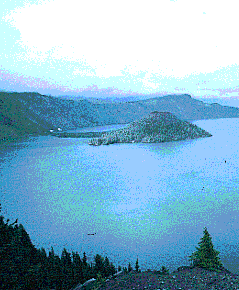This is an image of Crater Lake in Oregon, USA.
Click on image for full size
Image from: U.S. Geological Survey
Crater Lake
Mt. Mazama was once among a group of volcanoes stretching along the coast of Washington and Oregon. This group of volcanoes includes
Mt. Hood,
Mt. Rainier, and
Mt. St. Helens.
6850 years ago, Mt. Mazama erupted for a final time. The eruption occured over a number of months, and produced major outbursts of ash, lava, and hot vapors.
Following this series of eruptions, the cone of the volcano collapsed into the ground, and Mt Mazama became dormant except for activity which formed a small cinder cone in the center (shown in this picture). The collapsed volcano filled with water and became what we now know as Crater Lake.
The Indians who lived near Mt. Mazama when it fell have a different story of what caused the mountain to collapse.
You might also be interested in:
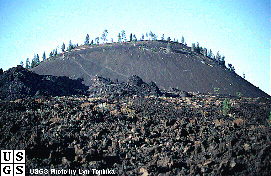
Cinder cones are simple volcanoes which have a cone shape and are not very big. Compare the size of this volcano to the strato-volcano in this image. They are usually made of piles of lava, not ash. During
...more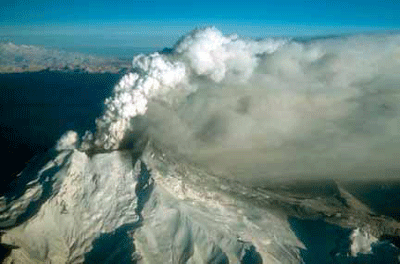
Ash is formed as a volcano erupts when rocks made by the volcano blow apart into millions of tiny pieces. The rocks are still very hot, because they just formed from lava. If the hot rocks come into contact
...more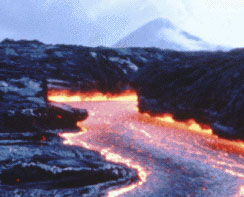
Lava can move in two ways, wide flat lava flows, or through channels which squeeze the lava into a small area. The fastest lava flows move at about 6 mi/hr, an easy jog, but they average between 2/3 and
...more
Plates at our planet’s surface move because heat in the Earth’s core causes molten rock in the mantle layer to flow. We used to think the Earth’s plates just surfed on top of the moving mantle, but now
...more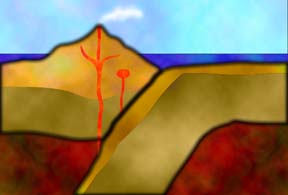
Many kinds of surface features are clues to a sliding lithosphere. Two types of features can form when plates move apart. At ocean ridges, the crust splits apart to make room for molten mantle rock. Continental
...more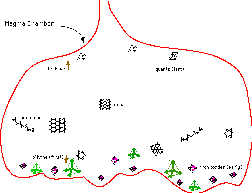
When magma is erupted onto the surface in the form of lava, it becomes silicate rock. With each different eruption of the volcano, lava which comes to the surface is made of slightly different chemicals,
...more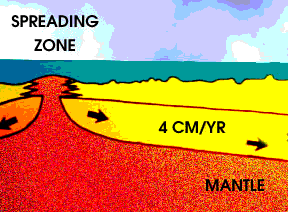
As the Earth cools, hot material from the deep interior rises to the surface. Hot material is red in this drawing, under an ocean shown in blue green. The hotter material raises the nearby layers, and
...more


